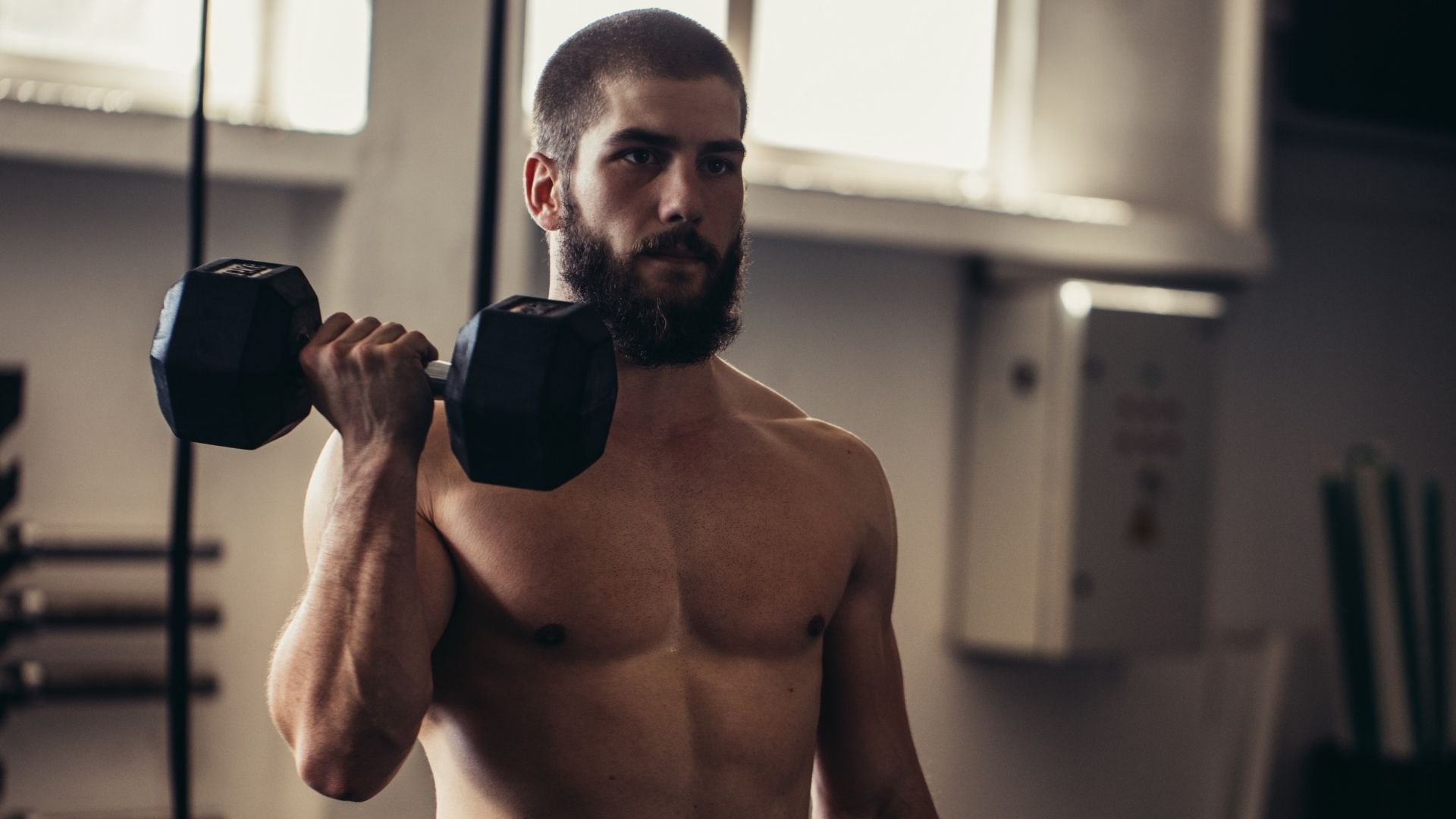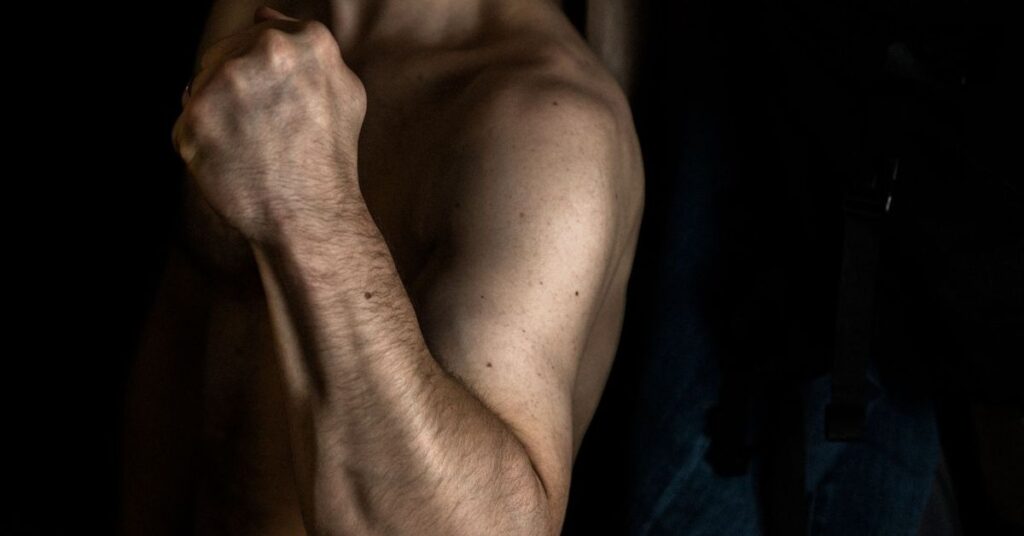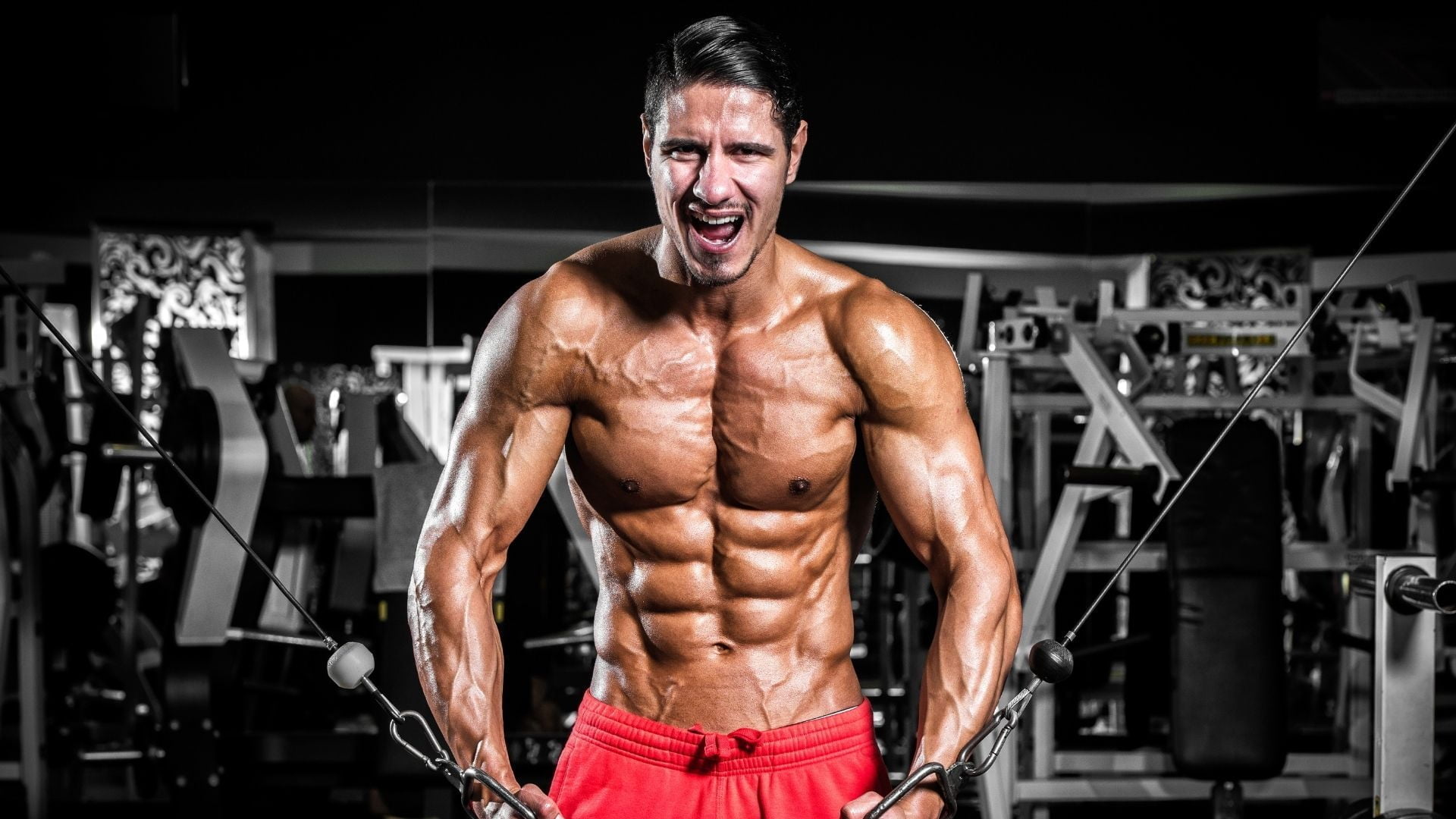
10+ Best Dumbbell Forearms Exercises for Stronger Wrist
Forearm training is often ignored, and many lifters resign their forearms to be an area of weakness in their body or even causing grip problems with deadlifts.
There are various options available to train your forearms; however, which are the most effective using dumbbells?
The 10 most effective exercises using dumbbells to strengthen your forearms:
- Supinated wrist Curl
- Pronated Curls for Wrists
- Neutral Wrist Curl
- Dumbbell Pronation
- Dumbbell Curl
- Hammer Curl
- Reverse Curl
- Zottoman Curl
- Dumbbell holds
- Finger Curls
In the final section of this post, you’ll know how to complete each of them, with ways to best incorporate them into your exercise routine.
I will address:
- A look at the muscles of the forearm
- How to complete each exercise and how to program them
- The advantages and disadvantages of using dumbbells to train your arms
Forearm Muscles A Review
The forearm consists of several muscles. This is the sheer complexity of movements made possible by the wrist and hand.
Suppose you are considering these exercises for training. It is recommended to consider the wrist muscles as extensors and wrist flexors in that case.
Wrist extension refers to the process of moving your knuckles to the forearm.
The wrist extensors consist of brachioradialis, three extensor muscle carpi (radial longus, radial, and the ulnar), and the extensor digitorum and extensor digiti minimi as the six deep muscles.
Wrist flexion refers to the process of bringing your palm toward the forearm.
The wrist flexors are comprised of the flexor carpi-radialis and ulnaris, the pronator teres, the palmaris longus, and the flexor digitorum superiors. The four deep muscles.
In training forearms, it is crucial to work both the extensors and the flexors.
Check out our article on How to Enhance Forearm Size (Complete guide) to get an overview of forearms and the best to teach them.
10 Dumbbell Exercises For Forearms

#1 Supinated Wrist Curl
Curls for the wrist are a must in any plan for forearm strengthening.
Supinated is a hand position with palms facing upwards. This will focus on the wrist flexor muscles.
They are best performed seated with your forearms placed on your legs. With a dumbbell in your hand, using your palms towards the sky, bend your wrist toward you to the maximum extent you can, then let your wrist extend completely.
Perform this entire range of motion with controlled movements while squeezing the dumbbell.
Because they require minimal effort, I suggest using a wide range of rep plans. This allows for continual advancement rather than staying in the same weight and rep patterns for prolonged lengths of time.
I suggest 3- 4 sets of 12- 20 reps. Begin with a set of 12-20 reps that you can complete for 12 reps, then aim to increase reps until you reach 20 reps, and then you can look for ways to increase your load.
Because of the tiny load used, reps, the 2.5kg leap between the dumbbells could frequently be a huge jump. Thus, modifying reps permits you to keep overloading the muscle session from session to session.
#2 Pronated Wrist Curl
Pronation refers to the hand position that has the palms facing downwards. This will focus on the wrist extensor muscles.
Do the same as the previous one, but this time, grip the dumbbells while keeping your palms looking downwards. You can extend your wrist as much as possible and then let it completely stretch until it reaches the bottom of the repetition.
Complete this full range of motion with controlled movements while pressing the dumbbell.
I suggest 3- 4 sets of 12- 20 reps. Start with a load you can perform for 12 reps, then aim to increase reps until you’ve reached 20, and then try at increasing the weight.
#3 Neutral Wrist Curl
Neutral can be described as a hand position with the thumbs upwards and palms with palms facing each other.
When you perform wrist curls in a neutral position, you’re doing more work for the brachioradialis than the brachioradialis, which is the most significant forearms muscle. It consequently contributes to their overall strength and size.
Most lifters can perform the exercises with a load that is a little heavier than a pronated or supinated grip.
I suggest doing these for 3-4 sets of 10 to 15 repetitions. Try to increase the weight as you complete 15 reps for each set.
#4 Dumbbell Rotation
In the same manner, as an exaggerated wrist curl keeping the dumbbell in the palms with your forearms resting on your thighs, rotate your hands to an upright position with your hand looking upwards.
Additionally, it will train the deeper muscles in the forearm that are responsible for pronation and supination.
These will require a lighter weight to be performed, and, therefore, I would suggest using a more intense rep pattern – 2-3 sets of 10-15 reps. They are ideal as a second or third exercise towards the end of the session.
#5 Supinated Dumbbell Curl
Although dumbbell curls can be primarily exercised for the bicep, they also work to strengthen the forearms.
When you curl your bicep, the wrist flexors operate isometrically, with no movement during the entire lift, to keep the wrist’s posture.
This allows us to overload the forearms more than is not possible with wrist-orientated exercises.
To maximize forearm muscle recruitment to maximize forearm recruitment, squeeze the dumbbell as much as you can, and try to curl your wrist towards the top of your movement. Imagine it as wrist supination to finish each repetition.
I suggest these three sets for 8-12 reps giving us increased and slightly lower reps over the previous exercises.
#6 Hammer Curl
Hammer curl is a different exercise that is often used to build Biceps. However, it can be an excellent exercise for the forearm.
The forearm’s most significant muscle, the brachioradialis muscle, is also accountable for elbow flexion. The neutral grip used in the hammer curl aids in increasing the load on it.
Hammer curls let you shift more weight than other exercises. To benefit from this, I suggest doing 6-8 repetitions.
They are great for starting your forearm exercises before moving on to other exercises using higher rep schemes.
#7 Reverse Curl
Reverse curls are dumbbells executed using a grip with pronation.
Like a supinated cur, it is mainly an exercise for the bicep. Still, the wrist extensors are engaged isometrically to stabilize the wrist’s position. The brachioradialis is engaged to create elbow flexion similar to the hammer curl.
They will require a lower load than the supinated or hammer curl. I would suggest slightly higher reps to increase the effectiveness of these exercises. 3-4 sets of 10 to 15 reps.
#8 Zottoman Curl
The ottoman curly is another option to increase the forearm load of bicep curls.
Beginning in a supinated state in a supinated position, lift the weight similar to the standard bicep curl. When you reach the highest point of your exercise, you will move your hands to pronate and pull the weight back downwards. After the final exercise, you can rotate your hands to supination. Repeat for the next rep.
This effectively combines the supinated curl, pronated curl, and dumbbell rotation in one workout. It strengthens the extensors, wrist flexors, supinator, and pronator muscles.
These are excellent when you are short on time and want to strengthen as much of the forearms as possible in a single exercise.
I suggest doing 2-3 sets of 8-12 repetitions. They can be challenging quickly, so you should expect to work with the weight that feels easy at the beginning of the exercise.
#9 Dumbbell Holds
Isometrics, when we train a muscle with no movement, is a different method to train our forearms.
Holding dumbbells is as simple as they sound. Simply hold dumbbells for a predetermined duration (usually 10-15 seconds).
These are fantastic to build forearm strength. They can significantly improve your grip strength when you do other exercises like deadlifts.
To increase the loading of the forearm muscles, an open hand to squeeze as forcefully as you can during the entire duration.
To maximize the transfer to the strength of the forearm or grip, hold the dumbbell in the same way with your hands as you would do in the deadlift (likely lower than an open hand).
For the size of your forearm muscles, I suggest three sets of 20-30 second holds. I recommend five sets of 5-15 second holds to increase grip strength. Once you reach the upper part of the range and you can build up your load, try to increase it.
#10 Finger Curls
In the grip of a light dumbbell that allows your hand to move, let the dumbbell rest within your fingers, and then close your hands completely again, pressing the dumbbell to its highest point.
This is a way to stress the muscles responsible for flexibility and movement of the hands, which are usually left untreated.
They are challenging and require a lighter load to be feasible. Thus, they require more repetitions instead of seeking to chase the load using lower reps. I suggest 2-3 sets of 15-20 reps towards the conclusion of your forearm workout.
If you’re seeking to improve your hand strength and have the most effective equipment to achieve this, I would recommend you read our article:
Benefits Of Using Dumbbells To Train Forearms

There are four advantages when you train your forearms by using dumbbells:
- They can be used in a variety of ways.
- They are unidirectional
- They permit the loading of a variable amount.
- They’re quick
They’re Versatile
Dumbbells are incredibly flexible and allow a variety of exercises to be done.
This article offers 10 exercises that can be done using dumbbells, allowing you to build your forearms in any way you want.
Just one dumbbell offers a variety of movement options for working both extensors and flexors.
They Are Unilateral
Unilateral, that is, only one side at a moment loading is essential for all training, but especially about arms forearms.
In general, lifters have one arm and one hand more powerful than the other. When doing bilateral exercises or both sides in exercises, the stronger side could compensate for the weaker side.
Unilateral movement lets us train each side separately and possibly even bridge the gap between the forearms more quickly.
They Allow Variable Loading.
The majority of gyms have dumbbells with a wide range of loads. They are usually 2.5kg jumps. Ideally, they should be in 1kg increments of 1-10kg.
This lets us progress faster as we’re not waiting until we’re ready to make that 5kg leap onto the machine or having to use a 20kg barbell for a long time as it was too heavy, to begin with.
They’re Quick
Dumbbells are easy and quick to use. They do not require any setup procedure, just getting the appropriate cord or collars with your barbell.
Simply purchase the set you’d like to work with and get into your training.
This is crucial because forearm exercises are often not the most thrilling and are usually put off until the last minute of the session.
It’s far less tempting to ignore it because it’s easy and quick to accomplish.
The Disadvantages Of Using Dumbbells To Exercise Forearms
There are two disadvantages in training forearms using dumbbells:
- It isn’t always exciting.
- The grip is more complicated.
It’s Boring
Like any other type of exercise, being restricted to one set of exercises could become tedious.
You wouldn’t want to exercise your chest using only dumbbells. You need the barbell, cables, or even machines.
Instead of just using dumbbells, some lifters might benefit from their training by adding barbells to their workouts or employing grippers.
Grip Training Is More Expensive And Not As Effective.
Your gym will have the most giant dumbbell.
It could be as much as 50kg, 30kg, or more in specific gyms if you are fortunate.
What can you do when your dumbbells have become too weighty to hold them under challenging positions?
You must look at alternatives – usually, you can use a barbell.
Training grip strength using a dumbbell is less precise than training with barbells, ranging from different handle widths, knurling, and handle widths to how you place it.
Training for grips is best with a barbell since it is more specific and allows for more weight than the limits of dumbbells.
Final Thoughts
Dumbbells are an excellent option to train your forearms. They allow for incredible movement variation and one-on-one training, and they tend to be faster than other alternatives.
The focus of lifters is to train their wrist flexors, as well as extensors, as well as their supinator and pronator muscle groups.
The biggest drawback of using dumbbells to train forearms is that they are prone to becoming monotonous and lack particularity and endurance for grip training.











